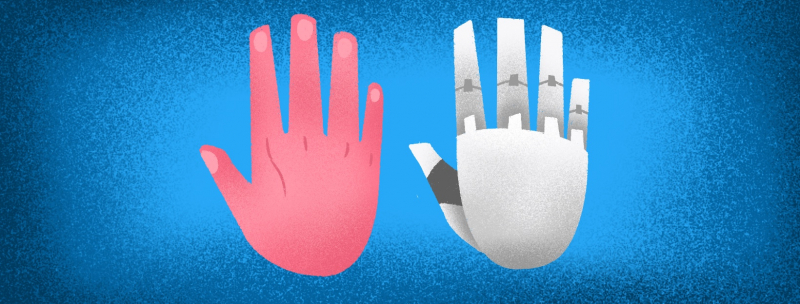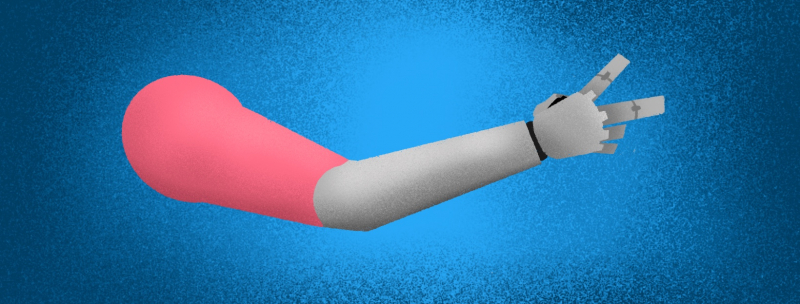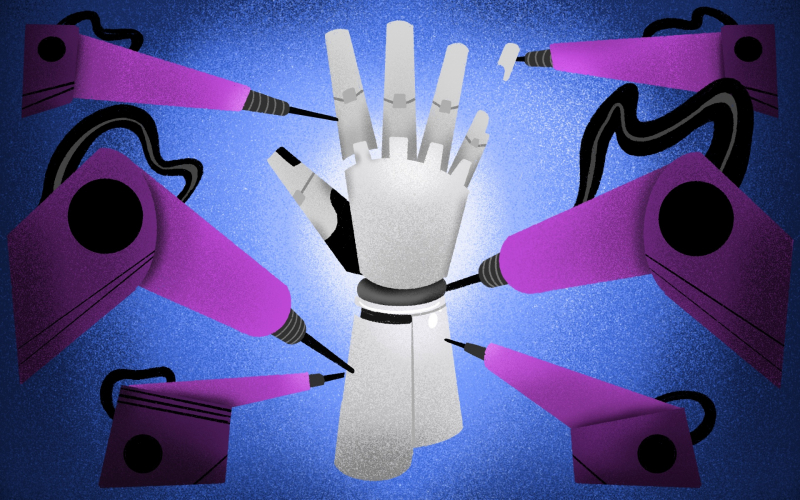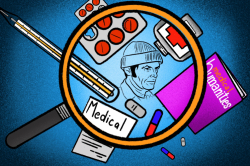Contents:
- What is a bionic prosthesis?
- What are its main parts?
- How are bionic prostheses created?
- How are they attached to the body?
- And does the person control it?
- Will it be possible to move such prostheses with our minds in the future?
- What can a person with a bionic limb do?
- What are the limitations of prosthetic limbs?
- Will bionic prostheses ever get cheaper?
- Are cyborgs reality or fiction?
What is a bionic prosthesis?

There are two main types of prosthetics that compensate the functions of lost limbs: powered and bionic. Powered or active prostheses are controlled via special threads inside them. They contain no digital parts and are moved completely with the power of the remaining joint. Bionic prostheses are robotic. They are some of the most advanced prostheses currently available on the market. According to the Russian Ministry of Labour and Social Protection, these are prosthetics with an external energy source. They are controlled by the signals in contracting muscles read with EMG sensors or muscle activity sensors. Both types of prostheses are made by a Russian company Motorica.
What are its main parts?

A prosthesis consists of an electric-powered wrist, a prosthetic interface (socket), wrist rotation mechanism, EMG sensors, a battery, a charger, electric wires, and, according to user preferences, a cosmetic shell.
How are bionic prostheses created?

Bionic prosthetics are developed to look as close to an actual hand, as possible, so we need to know its weight and size, the width of the wrist, and length of the fingers. These parameters are based on the age of our user. Then, after production, we install EMG sensors that will read muscle activity and transfer this signal to the prosthesis’ controller.
How are they attached to the body?

Prostheses are attached to the hand with a prosthetic interface or a socket. It closely fits to the hand and is located inside the prosthesis, so that the remaining part of the limb is placed inside it. These sockets are also created individually for every user.
And does the person control it?

Bionic prostheses are controlled by EMG sensors built into their sockets. They pick up electric potentials from contracting muscles. The information is then transferred from the sensors to the wrist microprocessor, where computer algorithms transform it into movement commands, so that the bionic arm can perform a wave or hold something.
Will it be possible to move such prostheses with our minds in the future?

These days, every bionic limb is controlled by muscle impulses that occur when we imagine a “phantom” action or when the hand muscles attempt to perform it. In the future, naturally, we will be able to read this signal directly from the brain’s motor area, but it will take us 15-20 years of development in the field of neurointerfaces to get there.
What can a person with a bionic limb do?

With a modern prosthesis, people can do practically everything needed for an active life – tie their shoelaces, get dressed, cook, or cycle. For example, the latest model made by Motorica, the Manifesto hand prosthesis, can perform 14 various grabbing movements set with a smartphone app. The previously available model, Indi, had only one grabbing movement in store. Apart from compensating for lost limb functions, prostheses can also add some new ones. For instance, you can pay for your purchases using an inbuilt NFC module or keep track of bodily functions on the inbuilt smart watch.
What are the limitations of prosthetic limbs?

There are two main fields of technological development of prosthetics: perfecting human computer interface to achieve fine motor movements and control of separate fingers – and various sensitization technologies. It is necessary to help people feel the objects they are holding.
Will bionic prostheses ever get cheaper?

In Russia, you can get bionic prostheses for free with a special state program. But only a small share of people who lost their limbs are using a prosthesis. It happens for various reasons, but one of them is the bureaucratic difficulties associated with it. It is important to make this system as transparent as possible. When all people who lost their limbs start using prosthetics, their production will reach a new level. They will become cheaper and more available.
Are cyborgs reality or fiction?

Only a couple of years ago, science fiction depicted cyborgs in a very distant future. We are used to seeing cyborgs as superhumans with added abilities and strength. Thus, people with prosthetic arms, legs, with cochlear implants, or artificial heart valves can be called cyborgs. They are already here!





